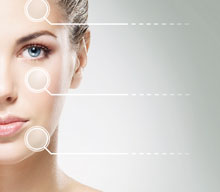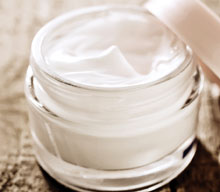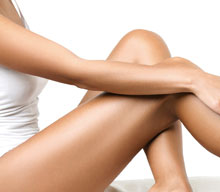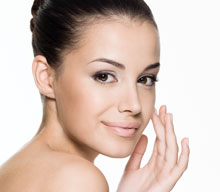Lightner Cream
For years, humans have been preoccupied with altering their skin tone. In the 1970s when people were baking in the sun to achieve a sun-bronzed glow (before the dangers of sun exposure were fully understood), skin lighteners were a burgeoning business in Asia.
Today, skin lighteners are sought worldwide for their ability to not only lighten darker complexion but also to control age-related hyper pigmentation and abnormal discolouration caused by blemishes, wounds and rashes. Skin whitening, skin lightening and skin bleaching refers to the practice of using chemical substances in an attempt to lighten skin tone or provide an even skin complexion by lessening the concentration of melanin. This can be accomplished by targeting two principal pathways: By inhibiting the production of skin pigment, or melanin, and by rendering melanin and its precursors colourless.
Several chemicals have been shown to be effective in skin whitening, while some have proved to be toxic or have questionable safety profiles, adding to the controversy surrounding their use and impacts on certain ethnic groups.
In medical literature, hydroquinone is considered the primary topical ingredient for inhibiting melanin production. Hydroquinone, however, has negative side effects and is banned from use in cosmetics in most countries, including South Africa.
Elessi skin lightener contains no hydroquinone only the following active skin whiteners:
- Alpha Arbutin
- Niacinamide
- Hexylresorcinol
- Sodium Ascorbyl Phosphate
Alpha Arbutin
Alpha Arbutin is a pure, water soluble biosynthetic active ingredient used in most advanced whitening skin care products. Alpha Arbutin blocks epidermal melanine production by inhibiting enzymatic oxidation of Tyrosine and Dopa. Structurally Alpha Arbutin is an alpha-glucoside (derived from glucose). Glucosides are common in plants. The alpha-glucoside bond offers higher stability and efficacy than the beta form found in the related Beta Arbutin. This leads to a skin whitening active that acts faster and more efficiently than existing components.
Alpha Arbutin was developed to inhibit production of tyrosinase and so block melanin formation safely without causing additional side effects as an opposite to effects of hydroquinone and d-kojic acid. Alpha Arbutin acts quickly in lightening the skin and reduces the tanning that occurs after the exposure to ultraviolet rays.
Niacinamide
Niacinamide is commonly known as Vitamin B3 and is an effective skin lightening compound that works by inhibiting melanosome transfer from melanocytes to keratinocytes. Often this ingredient works best when combined with other skin lightening treatments.
Studies have proven in the recent years that niacinamide is a powerful ingredient that yields many skin care benefits. It has been shown to reduce water loss in the skin and retain fatty acid levels (younger, plumper, firmer skin). It has also been proven at high concentrations (between 3-4%) to be a very effective acne reducer.
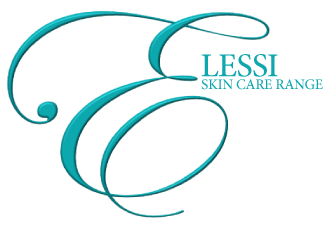
Hexylresorcinol
This crystalline phenol offers several benefits, including the ability to target pathways in the skin that lead to hyper pigmentation. In vivo studies over an eight-week period of time have demonstrated that 0.5% hexylresorcinol has the same lightening effect as 2% hydroquinone without any undesirable side effects of hydroquinone. Furthermore hexylresorcinol can reduce the appearance of fine lines and wrinkles, increase UVA and UVB protection and improve the skin’s barrier against pollution and sun exposure. This makes it great for not only helping to diminish the appearance of age spots and age lines but also aids in the their prevention.
Sodium Ascorbyl Phosphate
Sodium ascorbyl phosphate is a stable form of Vitamin C. Vitamin C is a natural antioxidant that occurs in many different forms (some stable and others unstable) each with distinct properties. Several of these forms have been shown to reduce melanin formation and provide a skin whitening effect when applied topically. These include l-ascorbic acid, magnesium ascorbyl phosphate and sodium ascorbyl phosphate. These forms when used individually or together can assist in slowing down hyperactive melanocytes and thus resulting in lighter skin.
It is imperative that all skin lightening products should be used with a sun block to protect the skin in the absence of adequate melanin. The process of lightening can be enhanced by the use of an abrasive exfoliating cream or gel scrub.
It is predicted that the skin lightening market will reach $10 billion by 2015 worldwide, a growth fuelled partially by a growing ethnic population and more demand for lighteners among men. Formulators should be able to keep pace with this increasing demand and continue to offer safer, more effective options.
Application
Apply gently over area where needed. Can be used in the morning and evening after cleansing and toning. Because of its unique moisturizing and skin penetration characteristics it can be used as a moisturizer. It also exhibit excellent rejuvenating properties.
When exposed to direct sunlight use a high SPF skin protector. UV will have no side effects but could slow down the lightening process due to sun tanning.


















